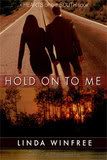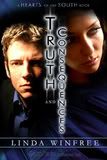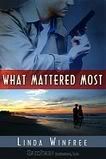An Analogy
I've been knitting a lot lately--'tis the season for scarves after all. Recently I was working with a gorgeous yarn I often use because it's easy to work with, and it's fuzzy. (Translate: it hides mistakes.)
I was on a roll, plotting and weaving away in my head, solving problems that had cropped up in revisions of my recent WIP, Love Sketch. By the time I stopped to take a look at the progress of my friend's scarf, I'd completed about two feet.
With a major boo-boo after about three inches--I had added and dropped several stitches so one side of the scarf had a little bump, one noticeable enough to make me swear.
I was really bummed. All that time wasted. It made me sick to my stomach to think about unraveling it and starting over. I showed it to a few different knitters who immediately saw the problem, but soothed me with the common, "You'll never see it." Or, "When it's wound around your neck, it'll be hidden."
I considered and continued knitting. But it didn't feel right. Every inch or so I'd stop and review my mistake, imagining it would somehow disappear or be less prominent than I remember. It, of course, never did.
It took me another eight inches of knitting to realize the enjoyment was gone, because I knew the result would be majorly flawed. I put it away for a while, unable to face what I knew I'd have to do--take it apart.
I finally relented, pulled the scarf back out, took a deep breath and slowly unraveled the entire thing.
And as I did, it struck me how I'd done the same thing with stories when something early on hadn't worked--the basic makeup of a character or a hole in the plot or a loose end had led me to unravel and rewrite. Whatever the problem was niggled in the back of my head and sucked the enjoyment right out of writing.
I also realized how similar casting on (the first row in knitting) is to a story's beginning, it's basic structure. If you're off there, the entire scarf turns out wonky, the way your entire story feels "wrong".
My yarn reminds me of my characters. I search for the coolest ones with deep, rich colors and interesting texture. And once I find a main yarn, I often look for an accompanying fiber, one that will accentuate the main thread.
I equate the structure of the piece to my plot: scarf, beanie, poncho or blanket, each will have a different pattern, each a different result. Stitch by stitch a piece is created, just as word by word, sentences build, then paragraphs, and eventually a robust story.
The pattern is the conflict, varied stitches providing texture just as conflict creates the peaks and valleys in a story.
And at the end of a knitted project, the special stitch you make to keep it from unraveling, the way you weave your leftover yarn through the item to finish it off, reminded me of the last chapter of a book, tying up all the loose ends to produce a satisfying story.
When I got down to my three good inches at the beginning of my troubled scarf, to a few solid and even rows, I started again. I paid more attention to making sure I had fifteen loops on each row, not fourteen, not sixteen. I paused every few rows to count and double check. And when I'd corrected my previous mistake and had nice even rows in my recreated work, I experienced a sense of accomplishment. I found I could actually enjoy the process again.
I cast off, wove my leftover yarn through and took a look at my finished work. It was a beautiful, satisfying piece I could be proud of.
I was on a roll, plotting and weaving away in my head, solving problems that had cropped up in revisions of my recent WIP, Love Sketch. By the time I stopped to take a look at the progress of my friend's scarf, I'd completed about two feet.
With a major boo-boo after about three inches--I had added and dropped several stitches so one side of the scarf had a little bump, one noticeable enough to make me swear.
I was really bummed. All that time wasted. It made me sick to my stomach to think about unraveling it and starting over. I showed it to a few different knitters who immediately saw the problem, but soothed me with the common, "You'll never see it." Or, "When it's wound around your neck, it'll be hidden."
I considered and continued knitting. But it didn't feel right. Every inch or so I'd stop and review my mistake, imagining it would somehow disappear or be less prominent than I remember. It, of course, never did.
It took me another eight inches of knitting to realize the enjoyment was gone, because I knew the result would be majorly flawed. I put it away for a while, unable to face what I knew I'd have to do--take it apart.
I finally relented, pulled the scarf back out, took a deep breath and slowly unraveled the entire thing.
And as I did, it struck me how I'd done the same thing with stories when something early on hadn't worked--the basic makeup of a character or a hole in the plot or a loose end had led me to unravel and rewrite. Whatever the problem was niggled in the back of my head and sucked the enjoyment right out of writing.
I also realized how similar casting on (the first row in knitting) is to a story's beginning, it's basic structure. If you're off there, the entire scarf turns out wonky, the way your entire story feels "wrong".
My yarn reminds me of my characters. I search for the coolest ones with deep, rich colors and interesting texture. And once I find a main yarn, I often look for an accompanying fiber, one that will accentuate the main thread.
I equate the structure of the piece to my plot: scarf, beanie, poncho or blanket, each will have a different pattern, each a different result. Stitch by stitch a piece is created, just as word by word, sentences build, then paragraphs, and eventually a robust story.
The pattern is the conflict, varied stitches providing texture just as conflict creates the peaks and valleys in a story.
And at the end of a knitted project, the special stitch you make to keep it from unraveling, the way you weave your leftover yarn through the item to finish it off, reminded me of the last chapter of a book, tying up all the loose ends to produce a satisfying story.
When I got down to my three good inches at the beginning of my troubled scarf, to a few solid and even rows, I started again. I paid more attention to making sure I had fifteen loops on each row, not fourteen, not sixteen. I paused every few rows to count and double check. And when I'd corrected my previous mistake and had nice even rows in my recreated work, I experienced a sense of accomplishment. I found I could actually enjoy the process again.
I cast off, wove my leftover yarn through and took a look at my finished work. It was a beautiful, satisfying piece I could be proud of.







3Comments:
What a great analogy! And so true!
I love this! And yes, sometimes it's worth the unraveling!
I love this, too. And it's so so SO true.
Post a Comment
<< Home